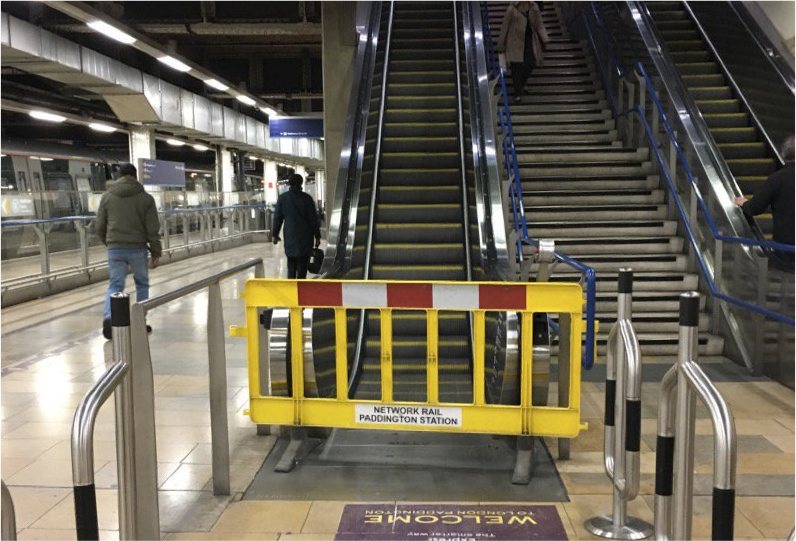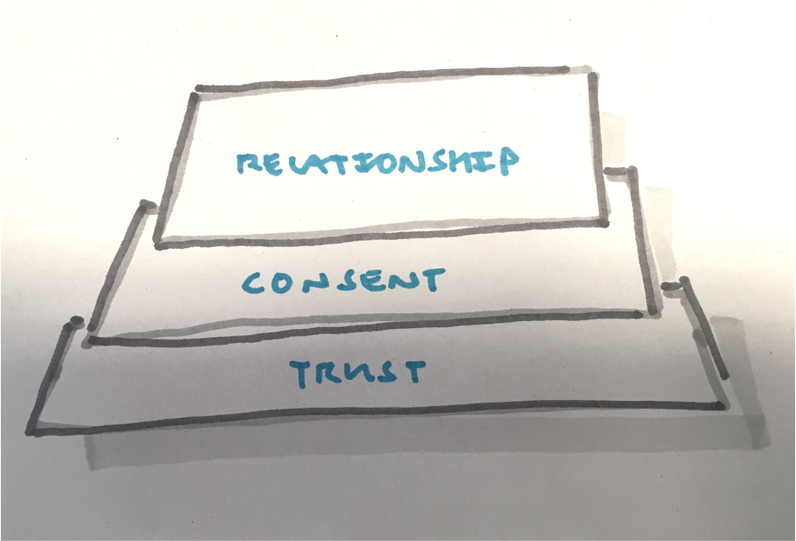Patterns of things that break
After my last blog post, Sharon shared a picture in response to the example that an escalator never breaks.

Clearly this escalator is broken and it hasn’t become stairs.
It made me think about interventions.
The act of intervention
Sometimes we’re too quick to intervene.
When we think something is broken it’s easy to think that we need to purposefully do something.
The definition of intervening is to prevent or alter a result or course of events. It can also be described as something situated between a set of the things–the start and end points of a situation.
Unintended consequences
Sometimes intervening has unintended consequences.
Whether or not we should be intervening, the danger is that we focus all of our attention on the intervention itself.
This act of intervening risks taking away our focus from what’s important–the outcome.
People’s lives don’t fit into neat groups or categories (admittedly, it’s easier to put them in boxes). Because of this many interventions fall well short of their intended reach.
While we’re busy delivering the answer we often find out later that the question has changed.
This happens when we fail to keep learning about the diverse and complex circumstances of the people we’re designing for.
Designing for things that break, not broken things
Some thoughts:
What if the need for intervention is based on the acceptance that things are broken?
This is a world where we believe that we have to intervene because we create things or situations that become broken, permanently.
What if we can deliver better outcomes by focusing on delivering things that do a better job of breaking in the first place?
This is a world where we accept that every thing around us is breaking all the time. The question is how well we design the break points.
Designing things to be open and adaptable
This makes me think of open systems that build trust and consent.

This starts to sound like the conversation we should be having in government if we’re intentional about changing the relationship between the citizen and state.
I also think that there’s a great opportunity for startups and disruptive businesses willing to think about ‘patterns of things breaking’ in every sector.
Patterns of things that break
Open systems or platforms should be capable of adapting to different groups of patterns of behaviour that can all achieve an outcome.
This is designing with the assumption that there is no fixed path for every set of circumstances.
For example, there is no fixed path to finding work, or becoming more independent through work. People need space, support and the right tools (tools that inform and empower). The more adaptable the support, the less likely we are to find ourselves with broken policy, or requiring a design intervention.
The escalator is now stairs
The photo is a lovely illustration. All they needed was a sign – “the escalator is now stairs”. People would have been informed rather than blocked.
Sometimes design gets in the way. People get stuck in the middle of the intervention.
The most important thing we can do is to fold all our best design intentions around the outcome.
This blog post is part of an experiment where I’m writing and publishing something everyday. This is day 8: everyday is an opportunity to write something – previous blog posts.
This is my blog where I’ve been writing for 18 years. You can follow all of my posts by subscribing to this RSS feed. You can also find me on Bluesky, less frequently now on X (formally Twitter), and on LinkedIn.